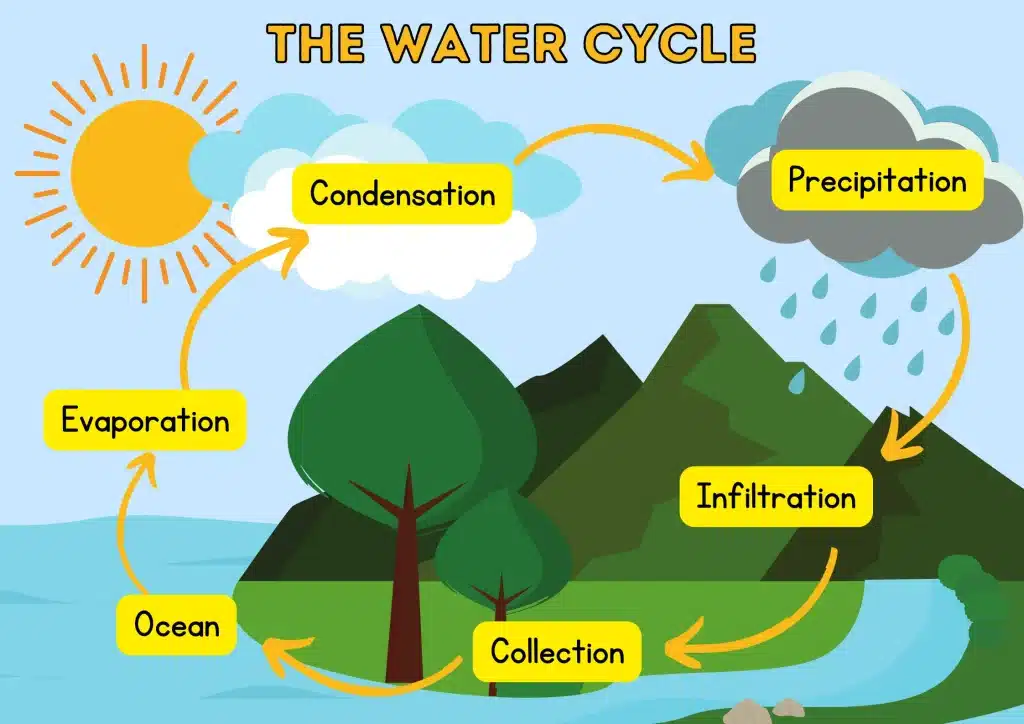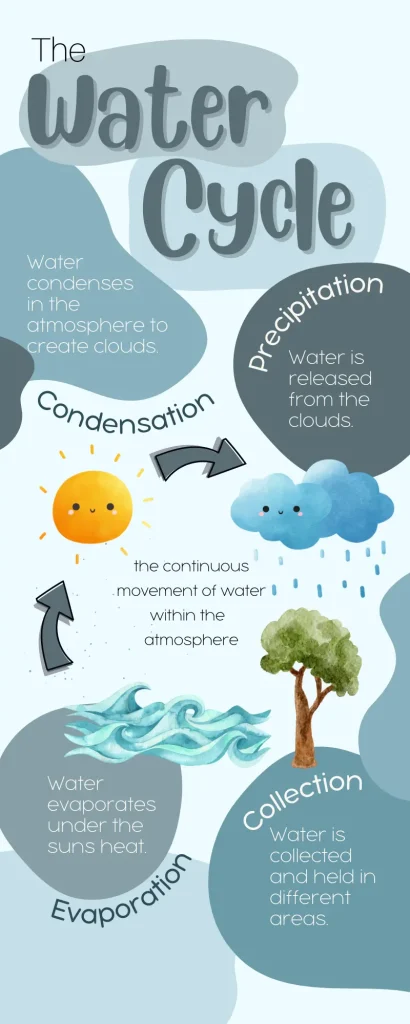As educators strive to develop engaging and effective approaches to teaching science to middle school students, the importance of incorporating interactive and visually stimulating tools cannot be overstated.
One area of scientific study that can be particularly challenging for students to grasp is the water cycle. Check this page for educational videos about the water cycle.
By understanding the movement and transformation of water through different stages in the cycle, students can gain valuable insights into a fundamentally natural process that has far-reaching implications for our planet.
In this blog post, we explore different ways to visualize the water cycle and show how these tools can be used in the classroom to reinforce key concepts, encourage critical thinking, and inspire curiosity.
Interactive Video
Interactive video technology allows students to engage with and manipulate digital content in ways that were previously impossible. With interactive video, students can explore the complex processes of the water cycle in a more immersive and engaging way, allowing for a deeper understanding and connection to the material.
By incorporating interactive videos into their lessons, educators can help students develop critical thinking skills and foster a love for science and learning.
An interactive video is a powerful tool that can make the study of the water cycle more accessible and engaging for middle school students and has the potential to transform the way students learn about and interact with the natural world.

Infographics
By presenting information through easily-understood graphics, infographics can help middle school students better understand the intricacies of the water cycle.
In addition to providing an engaging way to teach about the various stages of the water cycle, infographics can also serve as a method for enhancing creativity and critical thinking skills through the design process.
The incorporation of infographics into the middle school curriculum provides a new and dynamic way for students to learn about the water cycle, which can enhance their overall retention and comprehension of the material.
When creating infographics for use in the classroom, careful attention should be paid to design principles such as color palettes, typography, and the use of visual hierarchy to ensure that the information is conveyed in an effective and visually appealing way.

Three-Dimensional Models
Three-Dimensional Models are a powerful tool to help middle school students understand complex and abstract concepts related to the water cycle.
By creating physical models that represent key stages of the water cycle, students can see and touch how water moves through the environment.
This creates a more immersive and engaging learning experience and can help learners retain information more effectively.
There are a variety of ways to create three-dimensional models, from using traditional arts and crafts techniques to using cutting-edge 3D printing technology.
Consider incorporating Three-Dimensional Models into your lesson plans to help students better visualize the complex process of the water cycle.
Maps and Diagrams
The use of maps and diagrams can greatly enhance middle school learning about the water cycle. By providing visual representations of complex concepts, students are better able to understand the various processes and components involved in the hydrologic cycle.
These visual aids can include flow charts, diagrams, and maps of the water cycle at different scales.
By using colors, shapes, and other visual cues, these representations can be utilized to depict the movement of water through different states of matter and across different regions of the Earth.
In order to effectively communicate the processes of the water cycle, it is crucial to create clear, accurate, and visually pleasing maps and diagrams that students can comprehend and learn from.
Computer Programs and Simulation Games
Incorporating computer programs and simulation games are an effective way to enhance middle school students’ learning experience and understanding of the water cycle.
These educational tools allow students to observe the water cycle in action and experiment with different variables, such as temperature and precipitation rates, to see how they impact the cycle.
These programs and games also offer interactive learning opportunities that keep students engaged and motivated to learn.
Moreover, the use of technology promotes critical thinking and problem-solving skills, which are essential for student’s future academic and professional success.
Making the Water Cycle Fun and Engaging
By incorporating a variety of teaching materials, such as infographics, three-dimensional models, maps and diagrams, computer programs, and simulation games into the classroom setting, middle school students can have an enriched learning experience that is both fun and engaging.
When planning lessons about the water cycle, it is important to consider the different learning styles and abilities of the students in your classroom.
Incorporating a variety of teaching materials ensures that all learners are engaged, regardless of their individual learning styles.
This creates an optimal learning environment where the water cycle is not just understood by rote memorization, but truly comprehended by the students through creativity and critical thinking skills.
Assessing Student Understanding of the Water Cycle
In order to enhance middle school learning about the water cycle, it is crucial to assess the student’s understanding of the topic.
The assessment process should include measuring their knowledge of the key concepts and vocabulary related to the water cycle, as well as their ability to explain the process through various forms of visual representation.
This type of assessment not only helps educators identify any knowledge gaps or misconceptions but also gives students the opportunity to demonstrate what they have learned and identify areas for improvement.
In addition, teaching students how to visually represent the water cycle through diagrams, flowcharts, or other visual aids can help deepen their understanding of the topic and improve their overall grasp of scientific concepts.
By incorporating both assessment and visual aids, educators can enhance middle school students’ learning experience and provide them with a strong foundation of knowledge about the water cycle.
Conclusion
The visualization of the water cycle can significantly enhance middle school learning. By demonstrating the complexities of the water cycle through interactive and engaging visuals, students can gain a deeper understanding of the fundamental concepts of water conservation, climate change, and natural resource management.
This learning experience can be supported through hands-on activities, virtual simulations, and personalized instruction.
Ultimately, the visual representation of the water cycle provides a critical tool for educators to inspire and engage the next generation of environmental leaders.





